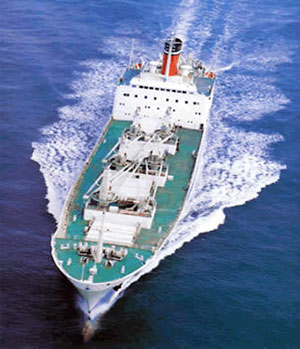Just 16 Ships Expel as Much Pollution as All the Cars in the WorldE. HuffNatural News Dec. 27, 2009 |
Popular 
Report: Hamas Says Witkoff Promised to Lift Gaza Blockade in Exchange for Edan Alexander

Ben Shapiro, Mark Levin and Laura Loomer Warn of Foreign Influence... From Qatar

Eloy Adrian Camarillo, 17, Arrested in Shooting Death of Infowars Reporter Jamie White

NYT: Trump Ended War With Houthis After They Shot Down U.S. Drones, Nearly Hit Fighter Jets

Trump Advisor to Washington Post: 'In MAGA, We Are Not Bibi Fans'
  Large shipping vessels have become commonplace in today’s global marketplace as goods are imported and exported across the world. While the high levels of pollution they create are something that most people don’t think too much about, some scientists are beginning to evaluate their environmental effect. One of the most disturbing facts discovered about these giant ships is that a mere 16 of them emit as much sulfur as do all the cars in the world combined. Large shipping vessels have become commonplace in today’s global marketplace as goods are imported and exported across the world. While the high levels of pollution they create are something that most people don’t think too much about, some scientists are beginning to evaluate their environmental effect. One of the most disturbing facts discovered about these giant ships is that a mere 16 of them emit as much sulfur as do all the cars in the world combined.Fred Pearce, a science writer and environmental consultant for New Scientist, has been studying the shipping industry for quite some time. He has focused particularly on their use of filthy, toxic fuel that is polluting the air at a staggering pace. According to his assessment, thousands of people die every year from the toxic fumes that are emitted from their smokestacks, lingering in the air as a brown haze for many days. If current practices continue, he estimates that upwards of a million people will die in the next decade due to ship pollution. The type of fuel typically used in large ocean craft is composed of the dirty leftovers from the refined fuel that is used in cars, trucks, and other land vehicles. It is thicker than land fuel and high in sulfur. It is essentially a cheap, filthy form of fuel that would never be permitted for use on the mainland but that are tolerated on international waters. The chemicals found in the smoke trails of this “bunker fuel” are known to cause severe inflammation, cancer, breathing problems and heart disease. The sheer size of these ships is astounding, measuring a quarter of a mile long on average. Each one holds approximately 14,000 full-size shipping containers, typically carrying goods from Asia to Europe and North America. There are over 100,000 ships and counting on the seas today. The reason why reckless ship pollution is allowed to continue is due to the International Maritime Organization’s (IMO) policy that permits bunker fuel containing up to 4.5 percent sulfur to be used in international waters. This number is 4,500 times higher than the sulfur amount permitted in vehicle fuel in the European Union. The IMO has reluctantly agreed to reduce the sulfur limit to 3.5 percent by 2012 and, eventually, to 0.5 percent. The biggest barrier to enacting stricter pollution guidelines is the increased cost of cleaner fuel. Bunker fuel is inexpensive and plentiful, allowing shippers to make use of the leftover byproducts of clean fuel production. Sources for this story include: http://www.dailymail.co.uk/sciencet… |



